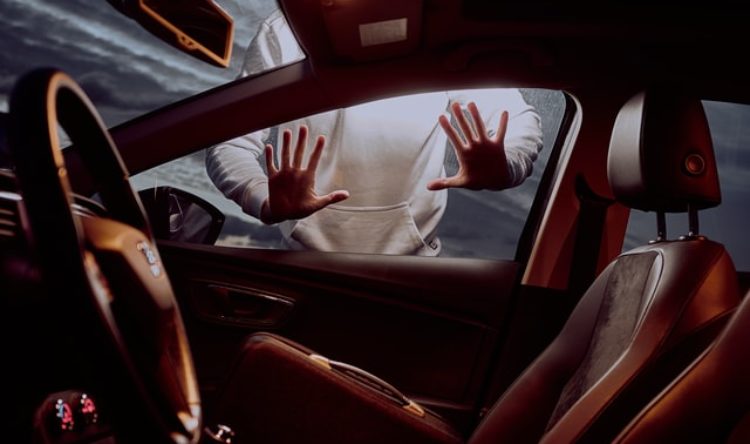Taking care of your wallet
Insurance premium see historic rise
As we all struggle with the cost of living crisis and the high rate of inflation, it perhaps comes as no surprise that insurance premiums are on the rise too.
The average cost of car insurance is now £924, breaking records once again as prices continue to grow.
Record rises
The latest data reveals how prices have soared by £338 (58%), on average, compared to this time last year. That’s according to the latest (Q3 2023) Confused.com car insurance price index, powered by WTW. Based on more than 6 million quotes over the quarter, it’s the most comprehensive car insurance price index for comprehensive policies. And according to the latest figures, the rise is also the highest annual increase since the Confused.com car insurance price index began in 2006. With a 19% (£148) increase in just the past 3 months alone, pricing trends are similar to those seen back in the spring (Q2 2023). This proves just how volatile the market is as it’s clearly moving faster than ever before.
Who’s paying
There are many factors that determine how much a driver pays for their insurance. This includes the area they live, their age and the type of vehicle they drive.
The latest data shows how all regions in the UK are seeing the highest prices on record. But it’s drivers in London that are paying the most expensive rates overall.
Inner London is the steepest, with the cost of car insurance now £1,503, on average. That means prices have increased by £567 (61%) in just 12 months.
In Outer London, prices are now £1,187, on average, following a £446 (60%) annual increase.
Outside of London, drivers in Manchester and Merseyside are seeing annual increases of around £417 (57%). That makes average prices £1,154. And in the West Midlands, the cost of car insurance is £1,139, on average, following a £442 (63%) increase.
Age barriers
When looking at individual ages, younger drivers once again take the brunt of the most expensive prices.
Drivers aged 21 and under are all seeing average costs over £2,000. But it’s those aged 18 who continue to pay the most for their car insurance overall. On average, prices are now £2,995. That’s increased by 89% (£1,414) in the past 12 months and by 25% (£591) in the last 3 months, on average.
However, 17-year-olds might have the biggest surprise of all. Their insurance prices have almost doubled in the past 12 months. Their car insurance prices have increased by £1,262 (93%), on average, meaning prices are now £2,613.
Although younger drivers are the most expensive overall, those in their 30’s could face financial strain too when it comes to their insurance. That’s as the latest data shows how drivers up to the age of 38 aren’t paying less than £1,000 for their car insurance. With the cost of living still a financial struggle for many, this could potentially mean that driving becomes unaffordable for millions.
When it comes to gender, insurers are not allowed to price differently for male or female drivers. But males still see the most expensive prices. The average price for men is now £987, following an annual increase of £359 (57%).
Meanwhile for women, prices have increased by £304 (59%). That makes average prices for them £820.
The same for everyone
Further research by Confused.com of 2,000 UK drivers also found that the majority were feeling the pinch.
Around 3 in 5 (63%) of drivers who renewed in the past 3 months (July to September) had a more expensive price of around £87 more. That’s despite 1 in 4 (26%) saying they had a clean licence and almost 1 in 3 (28%) saying they had 1 or more year’s no claims. Almost a third (28%) also said that they weren’t sure why prices were on the rise. So why are prices increasing?
There are many reasons why car insurance prices are increasing so rapidly and drivers may feel they’re being penalised unfairly.
The FCA introduced the General Insurance Pricing Practices (GIPP)(3) to ensure pricing was fairer. But adjusting to life after the pandemic and recent industry changes have both had a huge knock-on effect on how much drivers are paying.
The rise of electric vehicles (EVs) continues to grow in popularity, especially due to the government’s ambitious Net Zero plans. Some manufacturers have even announced that they’ll only manufacture EVs going forward. But EVs often come with a hefty price tag and not all drivers can afford them. They often come with enhanced technology features as standard, so can cost the insurer more to repair or replace. But the pandemic has impacted its supply chain, meaning there are often backlogs for drivers. EVs also generally have quicker acceleration speed than other vehicles, so could appear riskier to insurers.
Car buying costs have also been on the rise. EVs aren’t affordable for everyone, while second-hand vehicles are also keeping their value for longer, especially since the pandemic. So, if a driver has a crash and their vehicle is a write off, this now costs insurers more to pay out.
There are also more drivers on the road since the pandemic. This means claims frequency is increasing, so insurers are paying out more than they have in recent years. All of this plays into the overall risk factor linked with insurance, which is why drivers are likely to see an increase.
It all means that there is not likelihood of premiums doing a u-turn any time soon, if ever.
Compare and contrast
Top tips to help minimise your premium increases when it comes to renewal are:
-
Use a price comparison site or find a way of comparing a number of quotes. Staying loyal to your insurer is unlikely to see you getting the best price. However, once armed with better quotes, it is always worth contacting your current insurer to see hat they can do.
-
Pay for your car insurance annually, because insurance companies often charge interest for spreading the cost of your cover over the year.
-
Increase your voluntary excess as long as you can afford to pay it, if you need to claim.
-
Be accurate with mileage, as the more miles you drive, the more likely you are to have to make a claim. This means the higher your mileage, the more you pay for your car insurance. But don’t assume that a low mileage always means low prices. If you barely drive at all, your insurance company could see that as a risk as well.
-
Enhance your car security, as the more difficult it is to steal your car, the less of a risk it is.
For more advice on how to reduce costs, you could try Confused.com’s guide on how to get cheaper car insurance.







